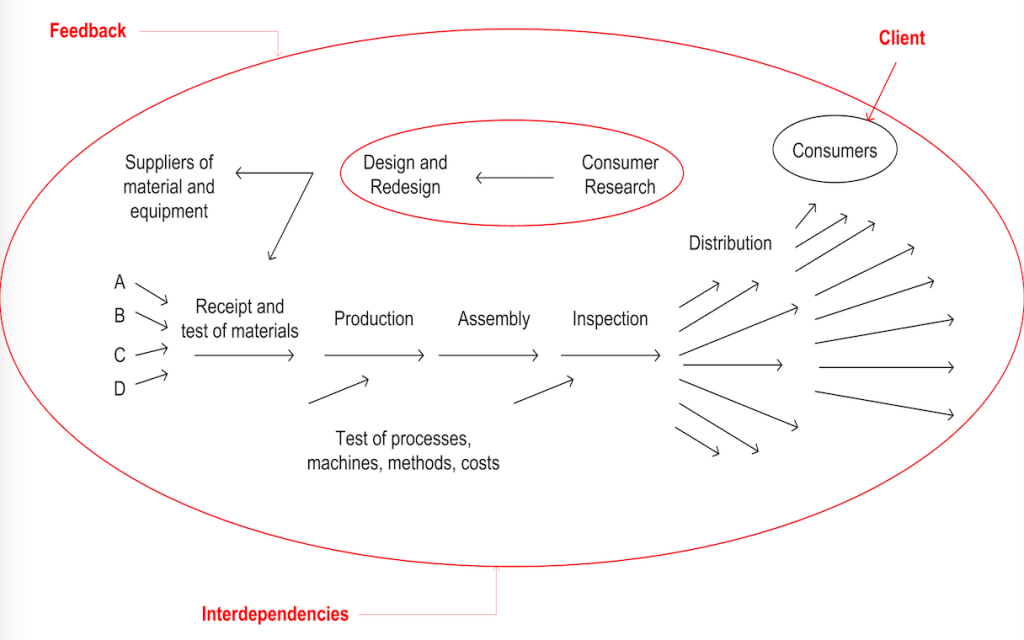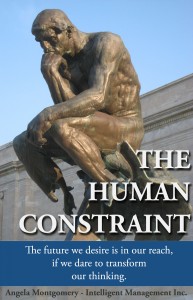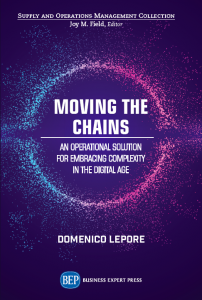 As we have declared in several publications over the years, our goal at Intelligent Management is the transformation of the prevailing, silo-based, organizational design and management style into one of whole system optimization.
As we have declared in several publications over the years, our goal at Intelligent Management is the transformation of the prevailing, silo-based, organizational design and management style into one of whole system optimization.
The month of May is an important one for all of us at Intelligent Management. It marks the 25th anniversary of the first company that we set up to disseminate the Decalogue management methodology. It is also the month when we get ready to release something that encompasses our 25 years of in-the-field research and development. We believe it can truly support and enable a fundamental shift in the way companies are managed, away from silos and fragmentation towards Quality, Involvement and Flow. In the meantime, we will be writing about the problem that needs to be addressed and our journey in creating something that will allow companies to take a giant leap forward in unifying and strengthening their efforts towards their goal. We hope you will find both inspiration and usefulness in sharing the journey with us.
Back to the future
In 1997, our Founder, Domenico Lepore, was among the few to receive from Larry Gadd, Dr. Goldratt’s Publisher at North River Press, the galley of ‘Critical Chain’. At the time, he had no idea how much it would have changed the development of his professional life (and, somewhat, impact his personal one).
It is very hard to over-estimate the contribution of Critical Chain to management. Simply put, Critical Chain lays the foundation for a complete rethink of the role of management (and Business School Curricula) as well as ushering in a new paradigm for the meaningful deployment of human resources.
At the core of Critical Chain, just like Drum Buffer Rope in The Goal, there is the common sense, yet revolutionary, concept of “finite capacity scheduling”: you cannot have the same person work on two different tasks at the same time. Scheduling must be “realistic”.
The essence of our work over the years with Critical Chain at Intelligent Management is this: a new, genuinely systemic Organizational Design emerges from the understanding of Critical Chain Project Management – CCPM, one that allows companies to overcome the prevailing hierarchical, silo-based organization. We called it “The Network of Projects”.
True to the spirit of continuous innovation and development engendered by Dr. Deming and Dr. Goldratt’s message, at Intelligent Management we have taken another step in the direction of making their knowledge more available and practically implemented.
Evolving management to a new level
By the beginning of the new millennium, every single element of knowledge needed for management to evolve into a legitimate social science (not unlike Economics, Sociology, etc.) were in place, published and available internationally. Both Deming and Goldratt had laid out the Theory, Principles and Methods to guide management from the quicksand of empiricism (“Let’s try something and see what happens” – I don’t really know what I am doing) to the safe shore of epistemology (“If I do this, I expect that to happen” – I have a Theory and I seek its realm of validity through planned experiments). Foundational to this new perspective is the understanding that an organization is a system, as Deming began explaining as far back as the 1950s. To paraphrase Deming:
An organization is a system; a network of interdependent people and resources working in processes and projects to achieve a common goal.
Deming depicted this with his diagram ‘Production Viewed as a System’ that we have represented below.

Moreover, some management thinkers in universities around the globe were beginning to point out the fallacy of prevailing management methods, almost invariably based on cost accounting type considerations. The overarching theme of “Complexity” was beginning to raise its head and, starting from the 9/11 tragedy through to the 2007 financial crisis and the 2020 pandemic, the world has increasingly had to come to terms with it.
Finding the path for companies to grow sustainably
In the aftermath of the 2007 crisis, following a very hard professional defeat, my team at Intelligent Management and I started to ask ourselves how, operationally not just conceptually, to move companies forward from what was blocking them. In other words, if sticking with the familiar inadequate traditional hierarchical model was clearly inadequate for managing complexity and accelerating flow, what could be a valid alternative?
The starting point was The Decalogue, developed 10 years earlier with Oded Cohen.
The Ten Steps of the Decalogue are:
- Establish the goal of the System, units of measurement, and operational measurement
- Understand the system (map the interdependencies)
- Make the system stable (manage variation so that processes are statistically predictable)
- Build the system around the constraint – a strategically chosen leverage point
- Manage the constraint – Buffer Management
- Reduce variation at (of) the constraint and the main processes
- Create a suitable management/organizational structure
- Eliminate the “external constraint” – sell all the capacity the system has available
- Where possible, bring the constraint inside the organization and fix it there
- Create a program of continuous learning
In essence, what we wrote is that there is an algorithm, a protocol, to ensure long-term sustainability for any organization and a coherent systemic design that this protocol engenders. This systemic design is the “Organization seen as a system”, constrained in one strategically chosen point (constraint), protected by a buffer whose oscillation is managed according to the principles set forth by Walter Shewhart (and magnified by the work of Dr. Deming). But there was still a piece missing that we had to develop.
The fundamental role of competencies for company results
What keeps organizations in business? Heeding their customers and providing them with what they need. It is important to understand that the transformation of an expressed or unexpressed customer need into a saleable product/service is a Project; it is the coordination of a set of (hopefully) well designed processes (tasks) aimed at delivering a chosen goal within an agreed upon timeframe, budget and specifications.
Management is the social science that allows organizations to transform (market) needs into (saleable) products and the vehicles for doing so are the Projects. Accordingly, managing Projects IS what managers do.
If we agree that it is only via well managed projects that we bring about the vision and the goal of an organization AND that organizations are inherently systems, networks of processes aimed at achieving a common goal, THEN we should seriously look at how Projects should inform the design of an organization.
We did. And this is what we propose.
Liberation from the tyranny of Silos, the path out of the exile of the mind that functional hierarchies have pummeled us into, the way “out of the crisis”, is not through the fog of the mind that Deloitte trumpets with their “Adaptable Organization.
It is, instead, the long overdue understanding that what humans offer to organizations, besides their intelligence and desire to do good, are “competencies”, all the many (and often overlooked) skills that they bring to the table.
The starting point, then, is to look at how these competencies can be fruitfully put to work.
Critical Chain, with its finite capacity scheduling algorithm, opened up a completely new realm of possibilities because it made the coordination of activities via projects “realistic”. But, we asked ourselves, what do we really schedule, when we schedule?
Project tasks gain predictability of outcome if they are steeped in the execution of well-defined processes. When executing tasks, what people really do is deploy a competence that they have. So, it makes sense to schedule competencies.
By allowing individual competencies to be gainfully leveraged through Projects, we achieve two fundamental results: individuals can give their maximum input via their knowledge-based contribution AND we remove a major form of frustration and disempowerment engendered by “performance assessment” and “year-end reviews”. Most importantly, by allowing individual talent to shine tangibly (not just paying lip service to it) in a way that is systemic and measurable, we foster a genuine culture of self-empowerment that feeds directly into company results.
Contact: intelligentmanagement@sechel.ws
SCHEDULE AN INTRODUCTORY CALL WITH US







Leave a Reply